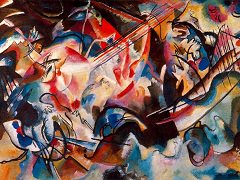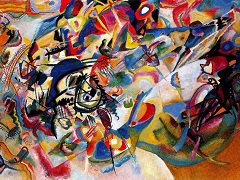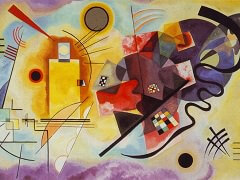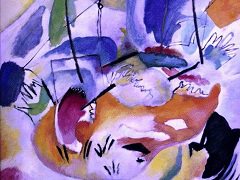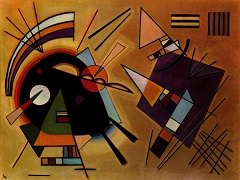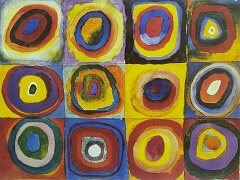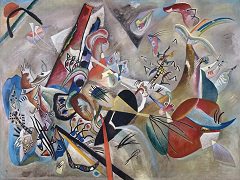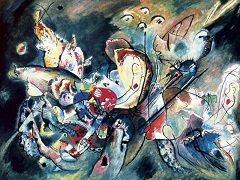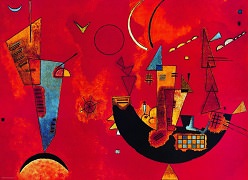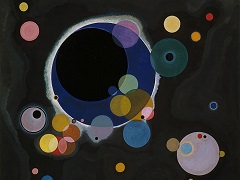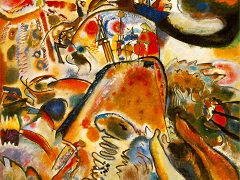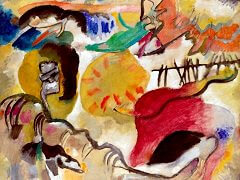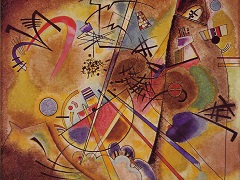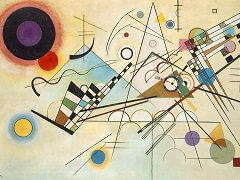Bustling Aquarelle, 1923 by Wassily Kandinsky
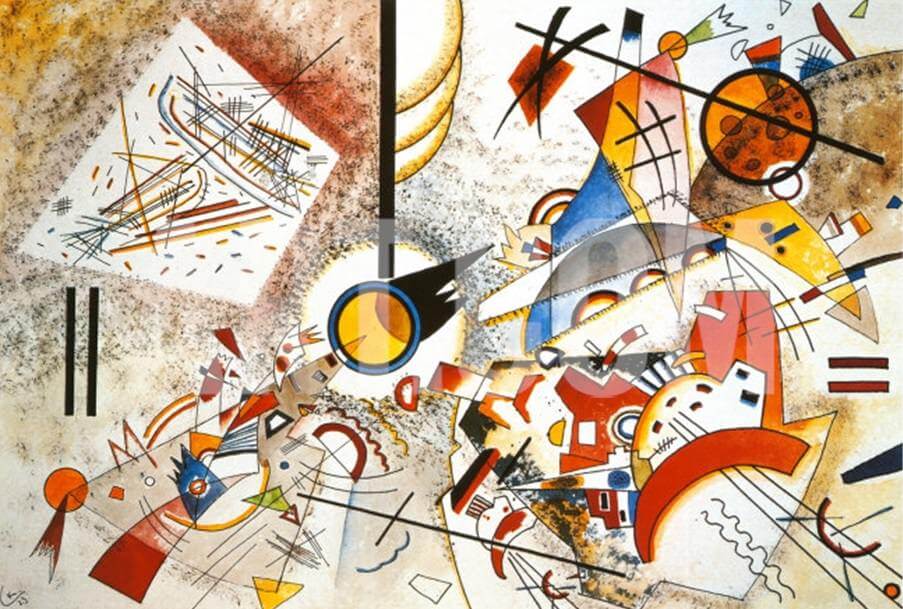
According to Kandinsky, The basic plane is, in general, rectangular or square. therefore, it is composed of horizontal and vertical lines which delimit it and define it as an autonomous entity which supports the painting, communicating its affective tonality. This tonality is determined by the relative importance of horizontal and vertical lines: the horizontals giving a calm, cold tonality to the basic plane while the verticals impart a calm, warm tonality. The artist intuits the inner effect of the canvas format and dimensions, which he chooses according to the tonality he wants to give to his work. Kandinsky considered the basic plane a living being, which the artist "fertilizes" and feels "breathing".
Each part of the basic plane possesses an affective colouration; this influences the tonality of the pictorial elements which will be drawn on it, and contributes to the richness of the composition resulting from their
juxtaposition on the canvas. The above of the basic plane corresponds with looseness and to lightness, while the below evokes condensation and heaviness. The painter's job is to listen and know these effects to produce
paintings which are not just the effect of a random process, but the fruit of authentic work and the result of an effort towards inner beauty.
Bustling Aquarelle, 1923 offers the demonstration of Kandinsky's theoretical observations

